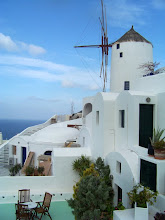As a water-front metropolis, Toronto is not as appealing as New York, Chicago or Seattle. My initial purpose of the trip was to see several new buildings in town and to visit the spectacular Niagrara Falls the 4th time.
 Our first stop was the Royal Ontario Museum by Libeskind. I was so eager to see a Libeskind’s building, but felt a bit disappointed when I got there. Maybe I’m no longer strongly attracted by striking forms. The play of form here didn’t invent a new model for exhibition or offer the visitors a new way to experience a museum, almost the same feeling I had when visiting Akron Art Museum by Coop Himmelblau. To me, the only interesting space is the Stair of Wonders which combines the sculptural form with fascinating object display at each level. However, I still want to visit Berlin Jewish Museum since the spatial sequence generates deeper meaning.
Our first stop was the Royal Ontario Museum by Libeskind. I was so eager to see a Libeskind’s building, but felt a bit disappointed when I got there. Maybe I’m no longer strongly attracted by striking forms. The play of form here didn’t invent a new model for exhibition or offer the visitors a new way to experience a museum, almost the same feeling I had when visiting Akron Art Museum by Coop Himmelblau. To me, the only interesting space is the Stair of Wonders which combines the sculptural form with fascinating object display at each level. However, I still want to visit Berlin Jewish Museum since the spatial sequence generates deeper meaning.
 Gehry’s new addition to the Art Gallery of Ontario is under construction right now. Unlike his signature sculptural exterior, this building has a simple linear transparent skin while the crazy forms are kept inside.
Gehry’s new addition to the Art Gallery of Ontario is under construction right now. Unlike his signature sculptural exterior, this building has a simple linear transparent skin while the crazy forms are kept inside.
 Ontario College of Art & Design by Will Alsop is such a playful and structurally challenging building. I really hoped to get to the top, unfortunately it closed during the weekend.
Ontario College of Art & Design by Will Alsop is such a playful and structurally challenging building. I really hoped to get to the top, unfortunately it closed during the weekend.
 Later we walked by the Graduate House by Morphosis and Leslie L. Dan Pharmacy Building by Norman Foster on Univeristy of Toronto campus, the last two stops of my architectural tour.
Later we walked by the Graduate House by Morphosis and Leslie L. Dan Pharmacy Building by Norman Foster on Univeristy of Toronto campus, the last two stops of my architectural tour.




 Gehry’s new addition to the Art Gallery of Ontario is under construction right now. Unlike his signature sculptural exterior, this building has a simple linear transparent skin while the crazy forms are kept inside.
Gehry’s new addition to the Art Gallery of Ontario is under construction right now. Unlike his signature sculptural exterior, this building has a simple linear transparent skin while the crazy forms are kept inside.
 Later we walked by the Graduate House by Morphosis and Leslie L. Dan Pharmacy Building by Norman Foster on Univeristy of Toronto campus, the last two stops of my architectural tour.
Later we walked by the Graduate House by Morphosis and Leslie L. Dan Pharmacy Building by Norman Foster on Univeristy of Toronto campus, the last two stops of my architectural tour. 



